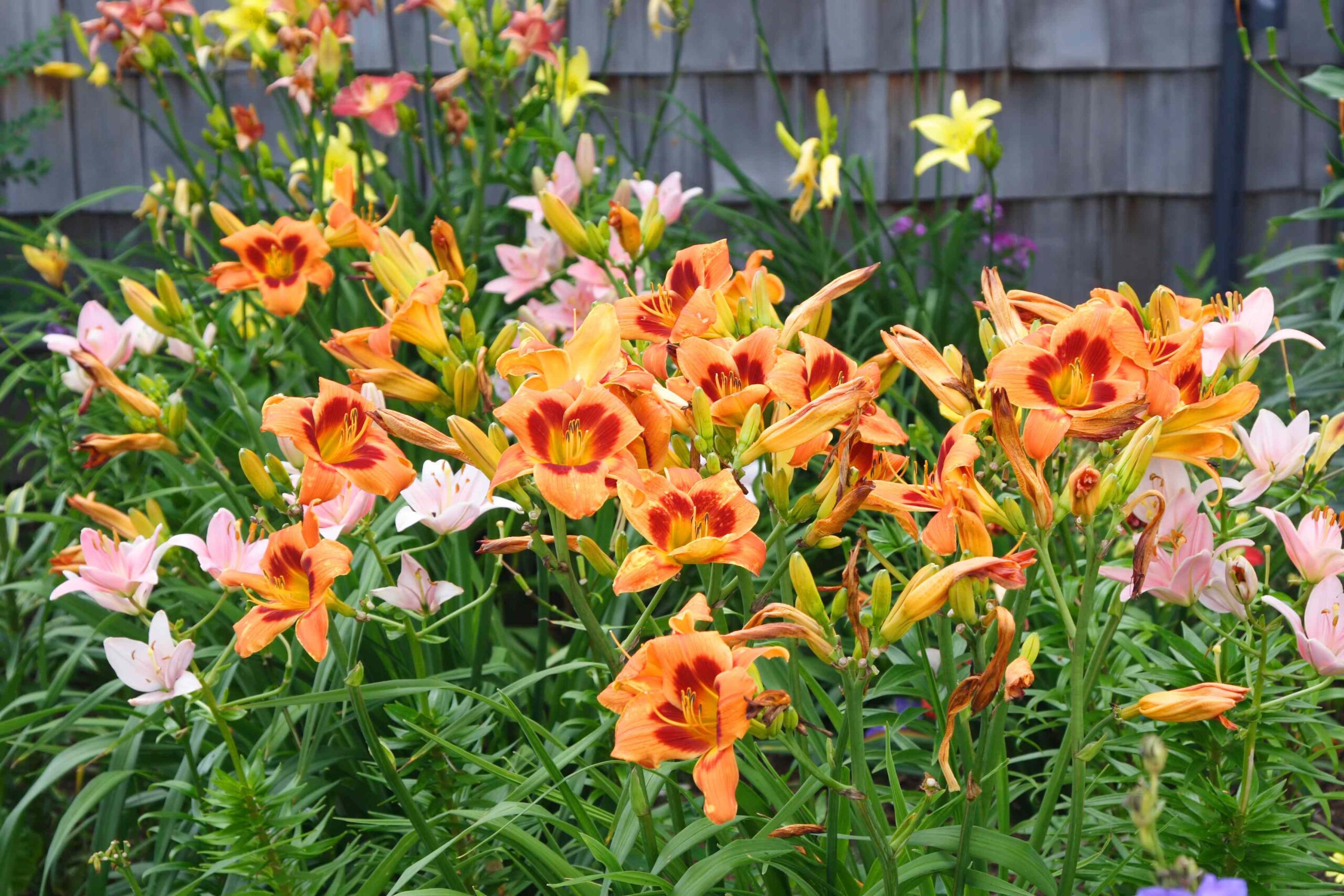Key Points
- Divide daylilies every three to five years to prevent overcrowding, which can lead to fewer blooms and increased disease risk.
- The best time to split them is early spring or after blooming ends in late summer, ideally on a cool, overcast day to reduce transplant shock.
- Dividing rejuvenates growth, boosts blooming, and gives you extra plants for free.
Daylilies are popular perennial plants that grow in sun or light shade and produce big, trumpet-shaped flowers in a range of colors. But if you want daylilies to bloom their best, you’ll need to divide them every three to five years to give your plants more space to grow.
In the guide below, plant pros share their top tips on how and when to split daylilies to ensure your plants grow and flower well for many years to come.
Meet the Expert
- Cathy Rees is the executive director and co-founder of the Maine-based Native Gardens of Blue Hill.
- Sharon Yiesla is a plant knowledge specialist at the Morton Arboretum.
The Spruce / Evgeniya Vlasova
Why It’s Important to Split Daylilies
Many perennials need to be divided or split from time to time to keep them growing well—and daylilies are no exception.
“Over time, daylilies can become crowded and they need to be divided,” Sharon Yiesla, a plant knowledge specialist at Morton Arboretum, says.
If you don’t, daylilies may become stunted or more disease-prone, and produce smaller flowers or not bloom at all.
Splitting daylilies can involve cutting just a small section of the plant away and replanting it elsewhere. Or it may require you to dig up the entire plant and split or cut it into smaller sections. Either way, this process rejuvenates the plant’s growth, helps daylilies bloom better, and can provide you with a few free plants for your garden.
The Spruce / Evgeniya Vlasova
Want more gardening tips? Sign up for our free gardening newsletter for our best-growing tips, troubleshooting hacks, and more!
When to Split Daylilies
Gardeners have some wiggle room when it comes to dividing daylilies, as these plants can be divided either in fall or spring. That said, Yiesla recommends dividing daylilies in early spring if you can.
“Dividing daylilies before the plants are fully leafed out makes the plant clump easier to manage,” Yiesla explains.
If you decide to split daylilies later in the year, aim to do it after your plants stop flowering, but at least four weeks before fall frosts are expected in your area. Dividing daylilies or other perennials just before frost hits can make your plants more susceptible to cold damage. You’ll know it’s time to divide your plants if they’re flowering less, looking overgrown, or if you haven’t split them in a few years.
The Spruce / Jayme Burrows
How to Split Daylilies
The best time to split daylilies is on a cool, overcast day just before rain is expected. Dividing your plants in cool weather and following the tips below can help you avoid issues like transplant shock and ensure your daylilies bounce back as quickly as possible!
- Water well. The day before you intend to divide daylilies, give your plants a deep drink of water. This will loosen the soil a bit and make sure your plants are well hydrated.
- Dig and lift. Using a shovel or spade, dig a circle a few inches out from the root ball of your daylilies. Then, slide your shovel beneath the plant roots and lift them up. If you don’t want to dig up the entire plant, Cathy Rees, the executive director and co-founder of Native Gardens of Blue Hill, offers an alternative method. Rees recommends excavating the soil about 6 inches away from the crown of the plant on the side you want to divide. This will help you to cleave off a section of the plant while minimizing root disturbance to the rest of the daylily, Rees explains.
- Remove excess dirt. Once you’ve dug up the section of daylilies that you’d like to split, shake or rinse away some of the dirt on the plant roots so they’re easier to see.
- Divide. Sometimes you may be able to split daylily plants by teasing their roots apart with your fingers. But most gardeners will need to divide daylilies by cutting their roots into sections with a gardening knife, shears, or a hori-hori. You can also take two garden forks and insert them back to back at the place where you want to divide, and then pull down, Rees suggests. This will break the plant into smaller, more manageable sections that you can replant separately.
- Don’t worry about cutting through roots. As long as each divided section of daylily has a healthy nest of roots and at least 2 to 3 fans of leaves, it should do just fine.
- Trim leaves. If you’re dividing daylilies in fall, use shears to cut the leaves down to about 6 inches in length. This step isn’t necessary if you’re dividing daylilies in spring and their leaves are still short.
- Replant. Choose a well-draining location that receives at least six hours of light per day and dig a planting hole that’s slightly larger than the roots of your newly divided daylilies. Amend the soil with compost if needed, and then locate the daylily plant in the hole so that the crown of the plant is just below the soil line. Then, fill the hole with soil, add mulch around the base of your daylily, and water deeply.
- Tend your plants. Daylilies generally won’t need much fertilizer after planting, but they should be watered regularly until they’re established or the ground freezes. If you want to apply a little fertilizer boost, choose a liquid organic fertilizer, such as kelp or fish emulsion, and dilute it with water before application.











